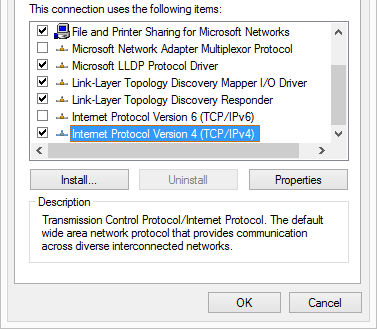
Good to know: these methods may help you fix a slow Wi-Fi connection in your home. It’s advisable to do this only after you’ve already replaced the cable itself and the issue still persists. Hence, consider replacing your RJ45 connectors with shielded, high-quality ones. If even one of the internal wires is not connected properly to the connector’s metal contacts, your connection speed will drop to 100 Mbps. Either the new RJ45 connector used is incompatible with the cable’s internal wires, or the re-crimping process is wrong. It is at this stage that issues will creep up. This inevitably requires “re-crimping” or reconnecting new connectors to the cable ends once they come out at the other end. The default RJ45 connectors that are pre-applied to the cable ends are often too big and need to be removed before routing the cable through the walls. This is both for achieving a cleaner look as well as protecting the cable from damage.

Often, home setups involve routing the Ethernet cable internally within the walls.

But if you’re still experiencing intermittent speed drops on your Gigabit connection, it’s possible that the RJ45 connectors at the ends of the Ethernet cable are the culprits. Switching from a lower bandwidth cable like Cat5 to a higher one like Cat5e or Cat6 should ideally fix the issue of capped Ethernet speeds. For more details, check out the things to know when buying Ethernet cables. If you don’t find any text on the cable sheath, it’ll be difficult to identify the cable type, as there are only minor differences in thickness and internal wiring between the different types of cables. You will be able to find text written on the sheath that will mention whether the cable is Cat5, Cat5e, Cat6, or something else. To identify the type of Ethernet cable you currently have, look at the sheath of the cable. Hence, you may just need to replace your cable with a cable that’s at least Cat5e, which is capable of transferring data up to 1000 Mbps. If your home network is using a Cat5 Ethernet cable, your speeds will be limited to a maximum of 100 Mbps, as that’s the data transfer limit of Cat5 cables.

Less commonly used cables are Cat6a, Cat7, and Cat8. Common Ethernet cables used in home and office networks are Cat5, Cat5e, and Cat6. Ethernet cables are classified according to their data transfer capabilities. If all of your Ethernet connections are in good order, the issue might lie with the cable itself. Even with a broken clip, you can push the cable all the way into the LAN port to eliminate a loose connection as the source of the capped speed. Ensure that the cable is tightly connected at both ends. To fix this, disconnect the Ethernet cable from both your router and computer and reconnect it after around 30 seconds. A loosely-connected cable can cause a speed drop for a high-speed 200 Mbps/300 Mbps or faster connection where the network will default to 100 Mbps.


 0 kommentar(er)
0 kommentar(er)
